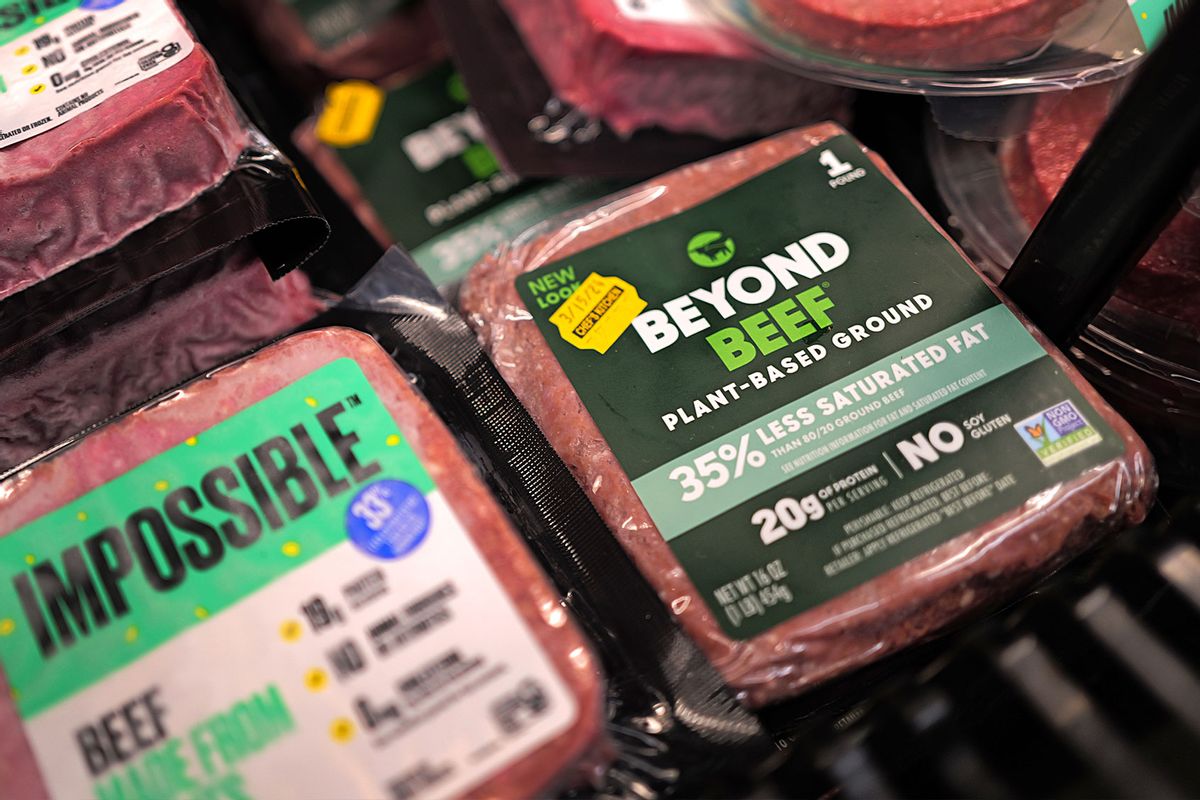Isobelle McClements was 13 when she came home from school and told her parents she was going vegan. Reading one book that delved into meat processing was all it took to convince her it was time for a lifestyle upheaval. The logistics of seamlessly feeding a family is a big reason her parents followed suit.
That was a decade ago. Nowadays, the freezer often stocks plant-based meatballs, sausages, or nuggets. When dining out, a faux burger sometimes makes the cut. Her father, David Julian McClements, is a food scientist at the University of Massachusetts Amherst who studies how to make such things healthier and tastier.
Still, everyone in the family prefers to prepare meat-free fare using fresh fruits and veggies, whole grains, and other ingredients. They can afford the more planet-friendly options now common in grocery stores, but have the time and means to make them from scratch. Most people, of course, can't do either of those things, which presents an impediment to broader adoption of beef, pork, and chicken alternatives that could help the nation hit its climate targets.
"Finding good quality ingredients [and] being able to bring them all together and combine them into something that tastes great but is also affordable, healthy and sustainable is very, very challenging," McClements said.
Pound for pound, plant-based mock meats cost an average 77 percent more than their conventional counterparts. These proteins are typically heavily processed as they're manufactured from things like soy and pea protein. "That's partly why it's so expensive."
When thinking about who is buying these pricey proteins, an affluent, urban, Tesla-driving white woman who has sworn off all animal products might come to mind. The high tax bracket often rings true, but the rest of that mental picture is a trite misconception. Even the idea that it's only vegans or vegetarians buying it isn't entirely the case.
Young and non-white consumers are the most likely to eat plant-based meats, according to a May 2024 survey commissioned by alt-meat advocacy nonprofit the Good Food Institute. Roughly 38 percent of Gen Z and 35 percent of Millennials report dining on such alternatives at least once a month, which is around twice the number of Gen Xers and Baby Boomers doing so. About one-third of Black and Latino consumers regularly eat meat substitutes, compared to one-fourth of white consumers. And just 2.79 percent of households toss only plant-based proteins into the shopping cart. Almost 95 percent of them buy the real deal as well.
Income is where the most striking disparities lie. U.S households with an income approaching $100,000 are most likely to purchase plant-based alternatives, but most of those making less than $45,000 rarely do. One reason is federal assistance like the Supplemental Nutrition Assistance Program, or SNAP, often provides too little financial help to make them affordable.
"It's just a question of cost, and if that is going to be feasible for them, to make sure they make it through the month," said Parker Gilkesson Davis, a senior analyst at the Center for Law and Social Policy who studies nutrition and poverty.
About 12.5 percent of Americans are enrolled in SNAP, which provides a monthly benefit based on income, family size and certain expenses. In April 2023, the average benefit was $181.72 for a single person or $343 for a household. Making that last is a challenge when food prices have climbed 25 percent in four years. Those who work to reduce hunger argue that safety nets like SNAP have failed to keep pace with inflation, dietary shifts, and all the ways climate change impacts the food supply chain. When low-income residents struggle to purchase meat with food stamps, it reinforces the fact that costlier plant-based alternatives are only for the affluent.
"SNAP has already fallen short in terms of supporting traditional diets, so adding other non-traditional items may be even more difficult," she said. "There are a lot of lower-income people who do want to consider non-traditional protein products or meats, but these products are more expensive, and so we have to account for that."
Of the plant-based meats, beef substitutes have the smallest premium at 20 percent more per pound than the real thing. That's because they have been around the longest, relatively speaking — hamburger analogues arrived about 15 years ago. Beef also tends to cost more than other meats (and has been getting pricier as climate change impacts herd sizes), which makes the financial jump to its plant-based versions smaller.
And yet even those who can afford the alternatives seem to be cooling on them amid concerns about their sustainability, nutritional value, and even their taste and texture. The $8.1 billion fake meat industry, which experienced soaring sales during the pandemic as the supply chain for conventional meats collapsed, struggled last year. The industry's sales volumes dropped 9 percent between 2022 and 2023, with a 2 percent decline in revenue.
Glynn Tonsor, an agricultural economist at Kansas State University, manages the Meat Demand Monitor, a database that surveys the meat-buying habits of consumers monthly. The trend he's seeing suggests that changing eating habits might have something to do with the market decline. In May, plant-based patties held 2 percent of the retail market and 4 percent of the food service market, which is respectively half and a quarter of the market portion they controlled in May of 2021, Tonsor said.
Dwindling volumes don't help prices, either. Conventional meats are commodities that have been sold at a vast scale for more than a century through a well-established and robust supply chain, with the benefit of government subsidies. All of that keeps costs down.
"Right now, plant-based meat products are not commodities, so that means that plant-based brands tend to sell lower volumes," said Daniel Gertner, a business analyst at Good Foods Institute. "They might, with those lower volumes, in certain cases make higher net profits, but then much of that profit is reinvested into things like overhead, research and development, [and] marketing. With any nascent category, there's this need to just build the infrastructure from the ground up."
The Bezos Earth Fund wants to give the industry a boost by finding ways of reducing the cost of plant-based alternatives to animal proteins.
"The food we're eating is one-third of global emissions. And if you look at where that comes from, half of it is coming from animal-sourced foods, from livestock. So it's a huge piece of the emissions puzzle," said Andy Jarvis, director of the fund.
In an effort to solve that puzzle, the fund has earmarked $100 million toward the creation of three research centers — the first of which opened last month at North Carolina State University — focused on sustainable protein alternatives like plant-based products, precision fermentation and cultivated meat.
But the largest hurdle to making plant-based proteins a more viable alternative for everyone is the U.S. government's deep investment in the status quo. Washington spends up to $38 billion subsidizing the meat and dairy industries each year, a move that keeps prices artificially low. Meanwhile, nations around the world have invested a grand total of little more than $1 billion in the alternative protein industry.
"There's no surprise that it's not at price parity, when you certainly don't have a level playing field on the government support," said Jarvis.
Barring a major federal intervention, one akin to the financial support that catalyzed explosive growth in renewable energy, getting plant-based meats to a point where they can compete with conventional counterparts will take quite some time. Until that happens, it won't matter if plant-based chicken tastes just like the real thing. Only when it's more affordable will more people be able to make a major lifestyle change, much like the McClements household once did.
This article originally appeared in Grist at https://grist.org/food-and-agriculture/the-climate-case-for-mock-meats-is-clear-but-who-can-afford-them/.
Grist is a nonprofit, independent media organization dedicated to telling stories of climate solutions and a just future. Learn more at Grist.org
"This story was originally published by Grist. Sign up for Grist's weekly newsletter here."




Shares